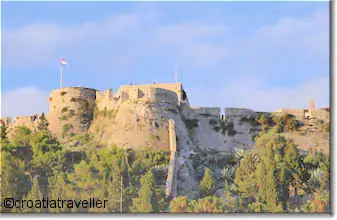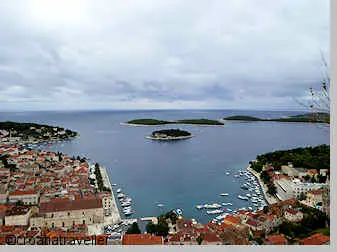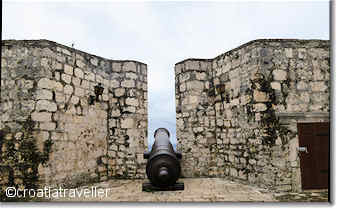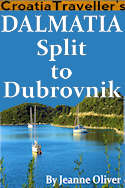Hvar's Venetian fort, Fortiza or Spanjola (in local usage), is a highlight of any visit to Hvar town. Its striking position perched on top of a 100m high hill makes it hard to miss, which of course was the point. The climb up to the fort is gentle and pleasant and the views from the top are majestic.
The multi-leveled fortification system has been well-restored, vividly evoking the days when Hvar was a lynchpin of the Venetian empire. Together with the town walls, Fortiza protected the towns for centuries and was so important to the development of Hvar that its image is on the town's coat-of-arms.
History
The Venetians completed the fort in 1551 but the foundations were laid much earlier, probably to protect an earlier Illyrian settlement in the first millennium BC. This early fort later became the site of a Byzantine citadel probably around the 6th century AD. Traces of this earlier fortress can be found on the southern side of Fortiza.
Construction of the current fortress began in 1282 shortly after the town turned to the Venetians for protection against the pirates rampaging through the Adriatic. Nevertheless it was the town that financed the construction from the proceeds of selling salt. At one point in the 14th century, Spanish engineers participated in the project which is how the fort acquired its nickname, Spanjola.
When Turks attacked the town in 1571, the entire population took shelter within the fort as the town was plundered and set on fire. Only eight years later however, a lightening bolt struck the fort igniting a store of gunpowder which blew up and caused substantial damage to the fort and its substructure. Repairs ensued and when the Austrians took over in the early 19th century, the fortress was remodeled with larger barracks and raised battlements. By the end of the century though, Hvar had lost its strategic importance and the fort fell into disrepair. Before its recent overhaul and transformation into a historic monument, the fortress was the site of a popular disco.
What to See
The reconstruction of the fort evokes its former grandeur when it was composed of four circular bastions, a tower and walls with battlements, traces of which can still be seen. In addition to admiring the canons pointed out to the see, it's possible to descend into a "prison" and admire the collection of amphorae collected from the surrounding sea.
Practicalities
It takes about 20 minutes to walk from the town up to the fort and it's a pretty walk. The most direct approach is to take the stairs next to Cafe Loco and climb to a road before taking more stairs. The path is well-signposted. Admission is €4.
Related Pages
Further ResourcesAll about Hvar in Croatia Traveller's Dalmatia: Split to Dubovnik Accommodation
|


View from the fortress

Join the Croatia Traveller Group
Recommended Experiences
©CroatiaTraveller 2005-2024 All rights reserved


 Hvar Island
Hvar Island 
